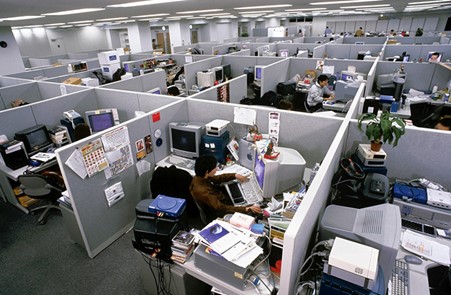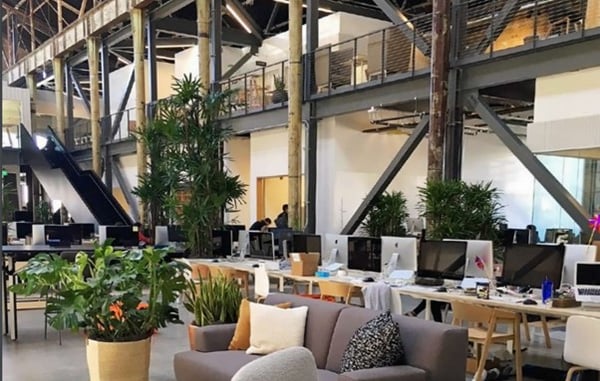Unified communication and collaboration are mission critical for organisations, and make up a significant part of our daily working lives.]
Communication allows humans to express themselves and understand others. Collaboration allows organisations to solve problems and build things together.
I recently caught up with David Byrum, a culture expert from Human Synergistics, and IR's CEO, John Ruthven, to discuss the human and cultural aspect of our new working world.
Do we try to preserve the type of culture we’ve known for many decades – or is the new future dependent on creating something entirely different? Let’s take a look at the importance of workplace culture and highlight some of the key issues discussed.
Watch the webinar - Collaboration Cafe: Don't let hybrid work be a culture killer
Static vs dynamic working
In a fast-paced world, effectively managing a positive work/life balance is a top priority – not only for employees, but for business leaders, and this is where dynamic working plays a vital role.
Traditionally – or what we now refer to as ‘pre-pandemic’ – the long-established culture of workplace communication and collaboration meant coming together in person. But ‘post pandemic’, the static physical office space which has long served as the beating heart of an organization’s input and output is no longer important.
COVID-19 proved once and for all that spending hours commuting to the office is not the only means of achieving success in the workplace. Dynamic working highlights the fact that workers’ lives don’t need to fall neatly into a typical 9-5 schedule and individuals can be productive at different times of the day.
A blueprint for the perfect workspace
For years, modern business leaders have been grappling with the concept of creating the perfect working environment, and shifting office design trends have had a big influence on workplace culture.
Pre-1950’s, offices were largely reminiscent of the factory floor, characterised by a crowded, linear space for as many workers as could be packed in, looked down on by higher, private levels reserved for their superiors.
In a break with convention, the fifties saw the integration of a more democratic infrastructure which organically grouped desks together to encourage collaboration, conversation and interaction among workers, with the idea of boosting productivity.
By the 1980’s the rise of computer technology and international telecommunications became the age of the widely criticized ‘cubicle farm’.

The cubicles of the 1980's
The current decade has seen office design trends building on the technology-driven trends of the 2000’s. Working became increasingly fluid and workplaces continued to reflect the need for collaborative and flexible environments. A recognition of the importance of worker wellbeing has driven an increase in breakout spaces – areas to relax, socialise or play games. Introducing an element of fun quickly became a common occurrence in offices, pre-empting the genesis of the virtual office, and making remote working possible.
 An office space in the 2020’s
An office space in the 2020’s
What is dynamic working?
As we shift into a vastly different way of doing things, the hybrid workplace is now the way we communicate and collaborate.
The principle of dynamic working is to focus on the output and key deliverables of an individual rather than the number of hours spent at work. Ultimately if output levels are high and business leaders prioritise an employee’s wellbeing, then it doesn’t really matter where and when they’re achieved.
The exact patterns of work will vary according to the organisation, and the individual’s needs, but flexibility is a key driver for the new workplace culture. The ability to flex around core office hours, allowing employees time to attend family commitments, training or health and wellbeing appointments is now considered paramount to achieving a healthy, productive work/life balance.
Understanding social norms
Understanding human behaviour in the workplace requires business leaders to consider situational cues and social norms as well as values or attitudes within their company culture.
Understanding social norms and how they motivate human behaviour should be a primary consideration for creating and adapting a workplace culture that keeps people healthy, prioritises their wellbeing, and aligns with any other unique organizational values.
The pandemic has forced us to innovate in the way we collaborate. The workplace today has emerged from uncertainty and undergone a fundamental shift in where we work, and when we work.
There is no roadmap for a universal hybrid workplace, and every organization, every industry and every workforce has different requirements and a different definition of success.
However, there are key considerations that business leaders in any organization need to address:
- Keeping up with constantly evolving workplace requirements
- Addressing the needs of employees, customers and clients
- Ensuring the performance of the systems that are already in place
Read our blog ‘Making the Hybrid Workplace Work’ here.
Business leaders – their role in hybrid workplace culture
The foundation of a hybrid workplace is to equip all users with feature-rich, intuitive collaboration tools to message, meet, voice and video call, share content, and communicate from any space.
But it’s just as important for leaders to make time in the day to show they care about their people. While remote working can enable employees to work more efficiently in a solo environment, the absence of social interaction within the workplace can have mixed effects. Strong leadership remains incredibly important to drive the desired workplace culture.
Research has shown that social interaction and support can help minimize worry, stress and make employees feel supported and connected.
Remote working has been a vast culture shift, and for the most part, well accepted by employees, so when teams do come together physically, it’s important for business leaders to be very clear about the purpose for that time in the office.
New entrants to the workforce
For a young person entering the workforce for the first time during the pandemic, a hybrid work culture is considered normal. Many younger employees haven’t even met their co-workers in person throughout the entirety of their employment.
Changing habits in the new workplace
The onus is on business leaders to take the opportunity to influence habit changes that support new social norms within their workplace culture.
Working closely with Human Resources, workplace strategists and architectural designers to create company culture is nothing new. In the physical office space, spatial qualities like furniture arrangements that encourage social interaction can provide opportunities to engage or withdraw. But with hybrid working, it’s more difficult to separate working from home to being at home.
So, addressing work-life integration, and designing a comfortable, efficient hybrid working environment is an obvious way of keeping workplace culture alive and well.
If the tools don’t work, nothing works…
We know that successful hybrid working depends on communication tools. If the tools don’t work, nothing works. But just as importantly, if they’re not working, you have to know why – and how to fix them. This means you need to see what’s going inside your entire communications infrastructure.
Complete visibility means you can identify where issues stem from and even proactively work towards preventing issues in the future. Properly working applications and devices not only mean you can get the job done, but help to alleviate stress and uncertainty, creating a positive, satisfying user experience.
IR is uniquely placed to help facilitate the new hybrid working culture by providing solutions to maximize collaboration and communication, which is pivotal for the workplace of the future.




